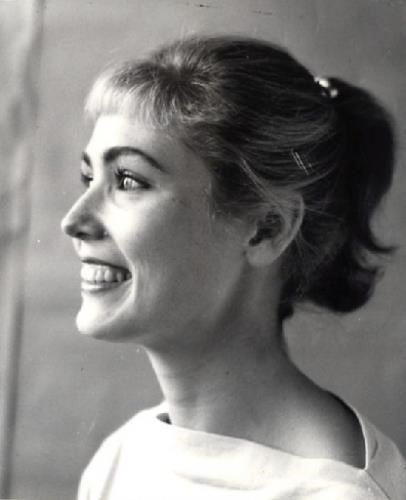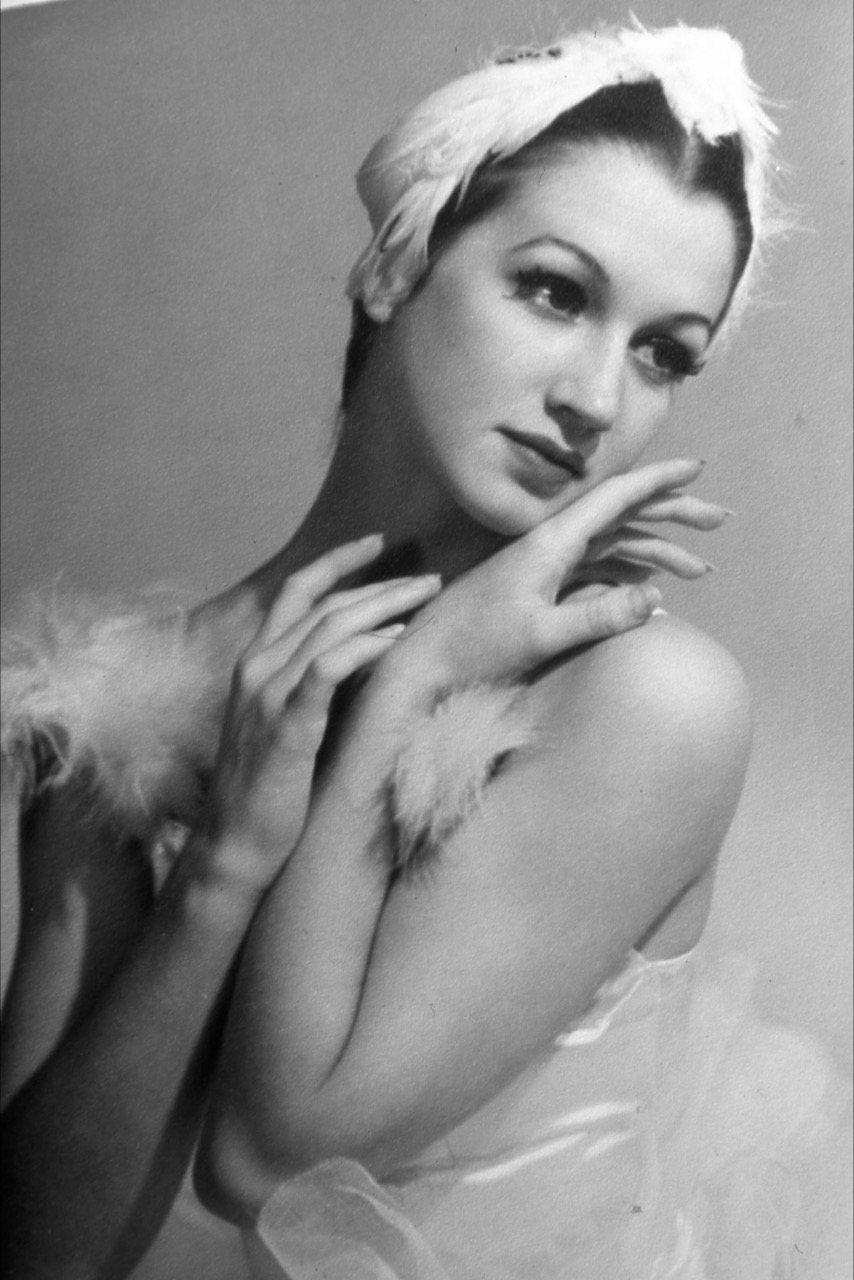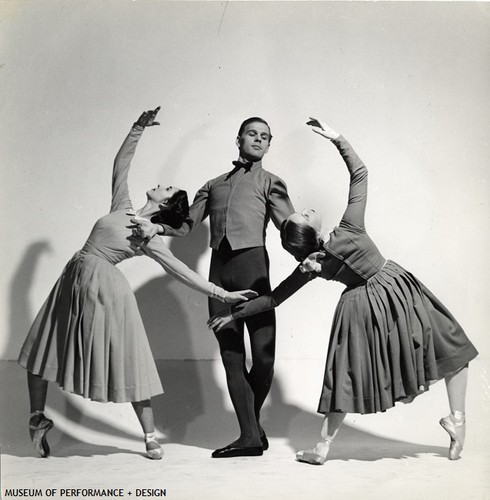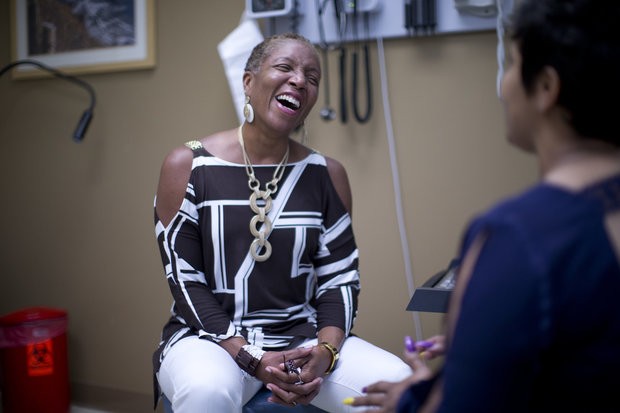Toni Pimble, one of the first women to lead an American ballet company, is a founder of the Eugene Ballet, the oldest established ballet company in the state. As resident choreographer, she created more than sixty ballets for the company, many of them collaborations with Oregon artists, including Native American poet Ed Edmo on Children of the Raven (1995), writer Ken Kesey on the story ballet Little Tricker the Squirrel Meets Big Double the Bear (1990), and Portland composer Kenji Bunch on The Snow Queen (2016). She also choreographed ballets for the New York City Ballet, the Nevada Dance Theatre, the Kansas City Ballet, the Atlanta Ballet, and the Washington Ballet. Her work has been performed throughout the United States and in Taiwan and Canada and as part of a United States Information Agency Tour to India, Sri Lanka, Bangladesh, Syria, Jordan, and Tunisia.
Toni Pimble was born in Surrey, England, on June 14, 1953, and trained at the Elmhurst Ballet School in her hometown of Camberley, Surrey (now relocated to Birmingham). Her early training was with Ivy Kirby, who toured the United States with Anna Pavlova’s company in the 1920s. For eight years, Pimble performed professionally in state-supported ballet companies in Kiel, Bonn, and Mannheim, Germany, gaining experience in soloist and principal roles. While working in Germany she met dancer Riley Grannan. Their desire to expand their careers beyond performing led them to purchase the Eugene Ballet School (renamed the Eugene Ballet Academy), where Grannan had received his early training. In 1978, the couple married, and Pimble immigrated to the United States.
Shortly after taking over the school, Pimble and Grannan were approached by the director of the Eugene Concert Choir to create a ballet to The Soldier’s Tale, which was performed with the Pacific Players. They embraced the challenge and began to choreograph ballets bolstered by a number of retired professional dancers in the community who welcomed the opportunity to return to the stage, as well as guest artists such as Zina Bethune and Glenn White. During these early years the Eugene Ballet formed a board of directors and an administrative staff to support the vision of the co-artistic directors.
In September 1982, the Hult Center for the Performing Arts opened with performances by Marilyn Horne and the Eugene Symphony, and the Eugene Ballet performed Pimble’s version of The Firebird with the choreographer in the title role. The Eugene Ballet has been a resident company at the Hult Center ever since. Except for a few character parts in story ballets, the 1986 Firebird was Pimble’s last performance, as her role of director and resident choreographer increased with the growth of the company.
In 1992, Pimble created the Celebration of the Uncommon Woman, a program of ballets choreographed by women to scores composed by women. The program was performed by the Eugene Symphony under conductor Marin Alsop. Pimble’s Columba Aspexit, a five-minute ballet with music composed by Hildegard von Bingen opened the performance. Longer works were created for the program by Dace Dindonis, Beth Corning, Lisa de Ribere, and Jill Eathorne-Bahr, who would become established choreographers.
Pimble created Still Falls the Rain in 1997, a ballet inspired by a report of the Taliban stoning to death an adulterous woman. The score was composed by Patricia Van Ness, a Festival of the Uncommon Woman composer. Many believe it is Pimble’s most political work. In 2008, when White Bird, a modern dance presenting organization, invited the Eugene Ballet—along with the San Francisco Ballet, Seattle’s Pacific Northwest Ballet, and the Oregon Ballet Theatre—to perform at Portland’s Arlene Schnitzer Concert Hall, Pimble chose the deeply feminist piece to represent the company. In the late 1980s, she and V. Keith Martin, artistic director of Ballet Oregon in Portland (a precursor of the Oregon Ballet Theatre), shared their resources and had joint seasons in both cities. This allowed them to mount Giselle in 1988.
From 1994 to 2008 the Eugene Ballet and Ballet Idaho joined forces to become a two-city company with Pimble as artistic director. Both companies maintained their own administrative staff and board of directors but shared resources of dancers and production assets. They performed each season at the Hult Center in Eugene and the Morrison Center for the Performing Arts in Boise, Idaho.
Pimble received two Oregon Arts Commission Artist Fellowship Awards, a National Endowment for the Arts Choreographer's Fellowship Grant, and Boise City’s Mayor’s Award for Excellence in the Arts. Under her leadership, the Eugene Ballet is the only dance institution in Oregon to receive the Governor’s Arts Award in 1996. In 2020, she received the Oregon Arts Commission/Governor’s Individual arts award. Pimble will step down as artistic director for the Eugene Ballet at the close of the 2024–2025 season.
-
![]()
Toni Pimble.
Courtesy Eugene Ballet -
![]()
Toni Pimble in The Firebird, 1982.
Courtesy Eugene Ballet
Related Entries
-
![Bonnie Merrill (1935–2019)]()
Bonnie Merrill (1935–2019)
Bonnie Merrill, a dancer, teacher, and choreographer, was a founder and…
-
![Jacqueline Schumacher (1920-2019)]()
Jacqueline Schumacher (1920-2019)
Jacqueline Martin Schumacher, a ballerina and choreographer of ballet a…
-
![Janet Reed (1916-2000)]()
Janet Reed (1916-2000)
Janet Reed’s stellar career began in Portland in 1934 when she danced t…
-
![Nathalie McDowell Johnson (1959-)]()
Nathalie McDowell Johnson (1959-)
Dr. Nathalie McDowell Johnson, a dancer and physician, moved to Oregon …
-
![Oregon Ballet Theatre]()
Oregon Ballet Theatre
Founded in 1989, the Oregon Ballet Theatre is the largest professional …
Map This on the Oregon History WayFinder
The Oregon History Wayfinder is an interactive map that identifies significant places, people, and events in Oregon history.







